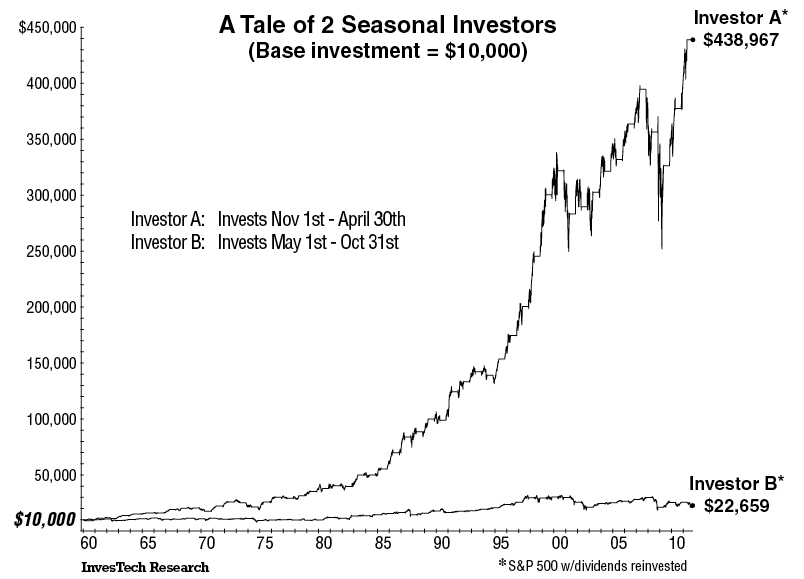Several readers have inquired about the seasonality factor when it comes to equities, which I mentioned last week (Tactical Shift: Reducing Cash).
Let’s take a quick look at the history off the seasonal advantages. “The Best Six Months of the Year” was first described by Yale Hirsch in Stock Traders Almanac decades ago. The historical chart below via Investech Research reveals the surprising degree of seasonality for investors, going back 50 years.
Here are the specifics of seasonality: Imagine we start with two $10,000 accounts, and use them to make investments in an S&P 500 Index fund. One account invests in one 6-month period, the other invests in the remaining 6-month period. Account A is invested from November 1st through April 30th each year, while Account B is invested from May 1st through October 31st.
Here are the numbers:
• Account A portfolio grew from $10,000 to over $438,967. That is a 42-fold increase.
• Account B portfolio barely doubled to $22,659.
By selecting the seasonally strong period from November through April, you capture 97.1% of the available performance over the past 52 years. (Note the November-April seasonality fared poorly in 2007 and 2008).
>

Source:InvesTech Research, October 21, 2011
Technical and Monetary Investment Analysis, Vol11 Iss11
The one caveat I would add is that a 50 year chart should be logarithmic, rather than algorithmic.


What's been said:
Discussions found on the web: